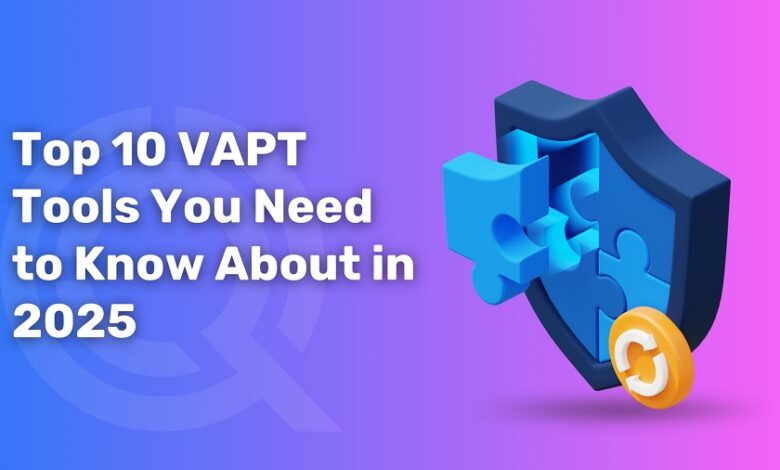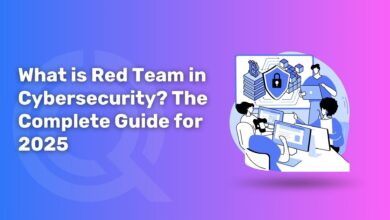Top 10 VAPT Tools You Need to Know About in 2025

Since the world of cybersecurity is dynamic, vulnerability assessment and penetration testing (VAPT) have proved to be essential in protecting digital assets. With the nature of cyber threats becoming more advanced than ever before, specific VAPT tools must be selected to ensure that organizations are on the bleeding edge. As 2025 ushers in new challenges and realms of technological innovation, here are the top 10 VAPT software every cybersecurity expert must be aware of!
Why VAPT Matters in 2025
It is important to present the reasons why VAPT is a pillar of contemporary security before getting down to the tools. The global cost of a data breach has soared astronomically, and companies can no longer afford to use only the conventional kind of firewalls or antivirus programs. Misconfigurations, zero-day vulnerabilities, and weak authentication systems are being exploited by attackers at an unprecedented rate.
VAPT is not just in the business of pointing out these weaknesses, but also does a simulation of a real attack scenario in order to determine the level of resilience within an organization. The result? A set of actionable insights that mitigate risk, are compliant, and generate long-term trust with customers and other stakeholders.
Top 10 VAPT Testing Tools
Tenable Nessus
It has extensive scanning capabilities that span a wide variety of vulnerabilities, and automated evaluation and remediating recommendations. Nessus allows unlimited vulnerability scan checks with prioritisation as per the most current CVSS standards. It is opportune for enterprises that want an automated vulnerability assessment that is reliable and efficient on a large scale, with informative reporting.
HCL AppScan
HCL AppScan is included with special capabilities of dynamic analysis when narrowed to web applications and APIs. The software automates the testing against vulnerabilities and provides an AI-enabled vulnerability identification. It is beneficial to organizations that depend directly on the security of applications and the safeguarding of critical web resources against emerging threats.
With APIs becoming the backbone of modern digital ecosystems, AppScan’s ability to test APIs with precision is a game-changer. Development teams integrating DevSecOps pipelines also find it valuable since the tool fits seamlessly into CI/CD workflows. By flagging flaws during early stages of development, it reduces costly fixes later in production.
Burp Suite Pro
Burp Suite Pro is popular among ethical hackers and penetration testers and has a combination of both manual and automatic web application security testing. Its features include proxy interception, vulnerability tests used to limit SQL attacks, and cross-site scripting prevention. It gives access to power, exercise, and detailed information to obtain a deep web security watch benefit.
Burp Suite has been a favourite among security testers due to its flexibility. The tool enables fine-grained control over whether you are making a quick reconnaissance or performing a deep-dive analysis. It offers the added functionality of communities and marketplace extensions that make it not just a tool but a full application security testing ecosystem.
Nuclei
The Nuclei is renowned as it is high-performing and quick to refer to a template-based scanning. It finds the known loopholes at a lofty velocity and can integrate with other security devices. The reason it is a favourite with teams that would like to automate vulnerability discovery without impairing its depth is its auto capability.
One of the strongest aspects of Nuclei is its community-driven templates. Security researchers frequently contribute new detection rules, keeping the tool ahead of emerging threats. In environments where speed and scalability are critical—such as tech startups or SaaS platforms—Nuclei offers the perfect balance of automation and accuracy.
Intruder
Intruder combines real-time scanning with the capability of threat ranking technology to make network security stronger. Framework as KEV list by CISA EPSS scoring, Intruder is set to scan the attack surface of an organization regularly and report publicly-known vulnerabilities at an early stage.
Its capability to integrate with vulnerability intelligence feeds keeps businesses a step ahead of an attacker. Moreover, Intruder is very easy to use and can be used by small businesses that might not have large internal security teams. Ranking vulnerabilities will help teams not be bombarded with endless notifications.
BreachLock
The BreachLock can be used together with an ongoing penetration testing and a vulnerability management function, with CREST-certified processes. Its automated vulnerability scanning tools and penetration services provide a proactive capability to the potential attacker that finds and exploits vulnerabilities more quickly than the enterprise.
What sets BreachLock apart is its Penetration Testing as a Service (PTaaS) model. Instead of waiting for annual or quarterly tests, organizations get continuous testing and real-time updates. This proactive approach mirrors how attackers operate—constantly probing for weaknesses—making it a valuable solution for industries like finance and healthcare.
ScoutSuite
ScoutSuite offers a cross-platform security audit of clouds such as AWS, Microsoft Azure, and Google Cloud to cloud-adopting businesses. These non-intrusive vulnerability scans, being an open-source tool, are useful as they help study cloud security posture assessment in view of the organizations sticking to the compliance guidelines and secured cloud infrastructure.
With multi-cloud adoption becoming the norm, visibility is one of the biggest challenges. ScoutSuite addresses this by offering clear insights into misconfigurations across platforms. Its open-source nature also makes it attractive to organizations wanting full transparency and adaptability.
SkylArk
Its knowledge base is wide as regards network and cloud security, where in-depth evaluation is conducted, and they cover specific corporate threats and compliance requirements.
SkylArk is probably not as popular as Nessus or Burp Suite, yet it is gaining popularity because it targets enterprise-specific risk. It will also industry-verticalize its scans, meaning that companies in regulated industries like telecoms, energy, or government will be offered an industry-specific solution. Its evaluation requirements are based on compliance and are, therefore, an ideal selection to address regulatory requirements.
Checkmarx
Checkmarx combines dynamic and static application security testing on a single platform. Its cloud services include the analysis of third-party code components, which are often sources of vulnerabilities. This would be useful, particularly to those development teams that have invested in such concepts as secure coding and continuous integration pipelines.
Checkmarx cannot be avoided by organizations that adopt shift-left security. It is also the first to integrate security checks into the development lifecycle, enabling developers to write secure code when they first write the code. This reduces bottlenecks and accelerates delivery timelines while maintaining a strong security posture.
FireTail
FireTail offers real-time threat discovery surrounding a zero-trust program. Its advanced protection systems are aimed at preventing intrusion into modern applications and information streams, knowing all the advanced, unauthorized intrusion possibilities.
FireTail is also the ideal solution once companies transition to zero-trust networks, since it monitors traffic flows in real-time. It can identify abnormal behavior, insider threats, or unauthorized lateral flow, which is why it is the best security tool to use in the current business environment, which is organized as a hybrid or remote working situation.
Choosing the Right Tool for Your Organization
Not every business needs all 10 tools. The right choice depends on several factors –
- The size of your organization
- The complexity of your IT environment
- Rules and regulations.
- Financial and funding capacity
- In-house expertise
For example, startups with lean teams may prefer Nuclei or Intruder for speed and automation, while large enterprises in regulated industries might lean toward Checkmarx, ScoutSuite, or BreachLock for compliance and continuous coverage.
Conclusion
In choosing a VAPT tool, experts like Qualysec Technologies say precision is essential – the tools should produce fewer false positives and identify appropriate vulnerabilities. Wrap up of automation with manual capabilities provides the best coverage. Consider the size of your organization, the security level, and the budget before committing.





